A story of how I re-discovered Peanuts and why I incorporate The Almonds of The Poor in my diet!
A couple of years ago I was diagnosed with hypothyroidism. Apart from coping with its side effects – I reduced my intake of some food items like peanuts, which are known to affect thyroid levels. Then early last year, I consulted a dietitian and she said that I should not completely avoid them and should eat them for their health benefits too. Restricted eating rather than zero eating should be followed. I used to love eating salted/ roasted/ masala peanuts with my drinks – I drink very occasionally like once in a couple of months, so having them again is a blessing and has brought the zing back into my occasional letting-go evenings.
What she said made sense to me, so I kind of increased that small dose of peanuts – a few nuts in poha, vermicelli, Sabudana khichdi, chikki. After being away from them for a year or so, I enjoyed adding them again to my diet.
This winter I visited my mom’s house and I brought back a bag full of sand roasted peanuts with shells. And a neighbor also gave me a big bowl full of raw peanuts in shells from Gujarat. I had the best of both North & West India this winter.
Even V ended up saying that eating these sand-roasted peanuts is the true essence of north Indian winters and he is thankful to me for bringing home that!
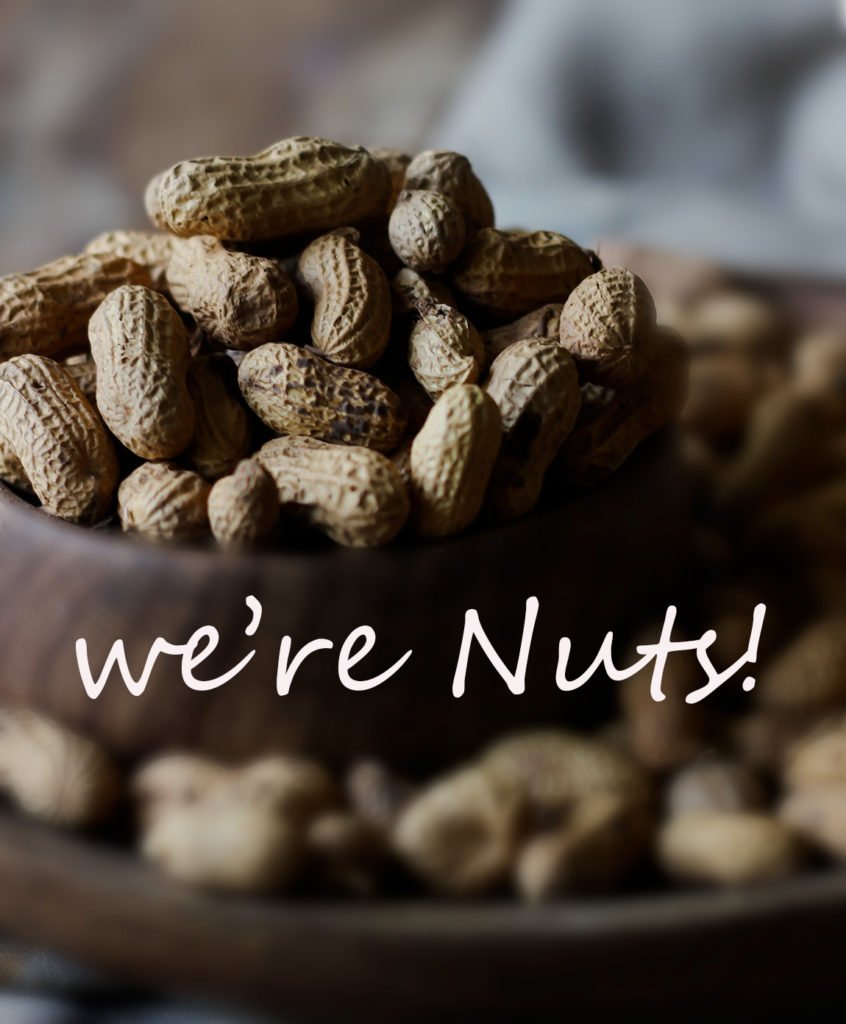
What does a peanut look like?
The nutritional profile and its low cost have led to this phrase. Peanuts grow underground in elongated pods called hulls. The peanuts are in pairs or more in each hull. They have white to pinkish color skin on the nut depending on their maturity. The pods or hulls are roots of plants and covering shells for the peanuts as well.
What is the best season for peanuts?
The best time to get a fresh supply of peanuts is late summer or early fall. In India, March and October are the best times to get a fresh harvest. The plant requires dry and warm weather with moist to dry soil for its ideal growth. Peanuts improve the soil quality by making it nitrogen-rich. So it is a crop of choice when soil needs to be enriched between crops.

How do you pick good peanuts?
When choosing peanuts the shell of the peanut should not be soft or broken with cracks. A harder shell ensures peanuts are not exposed to air which turns the peanut rancid faster. Peanuts without shells should be bigger nuts but not broken or without skin. The ones with bright pink skin and intact nuts have a longer life and good taste.
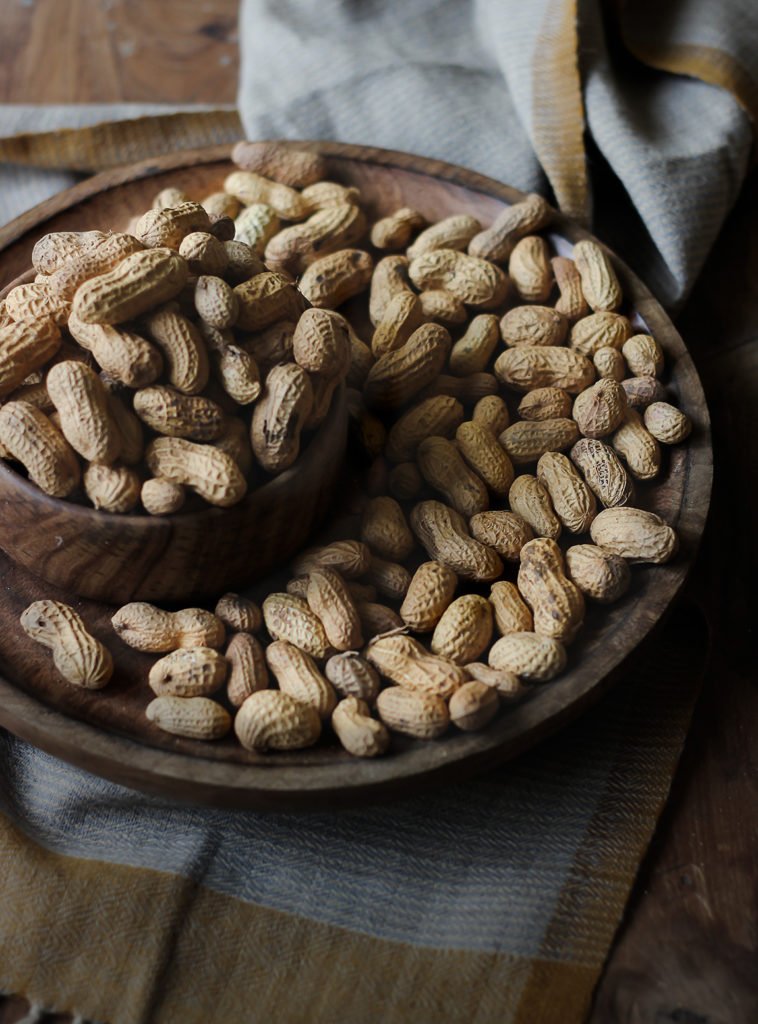
What are the health benefits of peanuts?
Peanuts are low in carbohydrates and high in protein. Though they are high in fats, it is a good fat that helps lower blood cholesterol and so lower the risks of heart diseases and help fight cancer as well. Other nutrients present in peanuts are in similar amounts to almonds or other nuts. Peanuts are a very filling snack option which makes it good for people with diabetes or those working on losing weight. Vitamin C and Resveratrol make it a good option to have good hair and glowing skin.
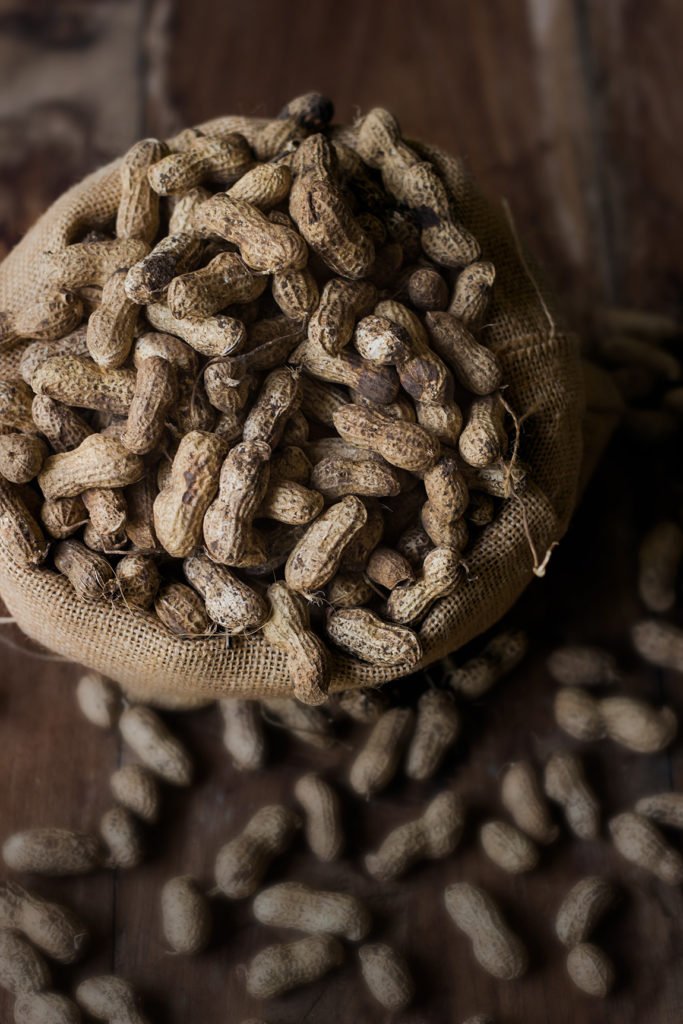
Where to find the best peanuts?
China and India are the major producers of peanuts in the world. The Peanut plant matures in a period of 4 to 5 months from planting to harvest. The plant grows best if the plant receives dry and warm weather. Dry and sandy soil conditions with dry weather aid the plant’s growth well.
Which is the best way to eat peanuts?
Peanuts are best known as winter food that can be prepared in several ways as a mid-meal snack. Peanuts can be roasted, fried, or boiled with or without shells. Coating the nuts with spices adds to their taste. These nuts coated in gram flour are an all-time favorite snack to go with drinks.
Many sweet preparations like peanut butter, energy bars, and rolled balls with jaggery and other nuts are healthy and delicious. Other than a snack, peanuts are added in many recipes to add a nutty flavor and give a crunch to a bite. Peanuts add crunch to any dish or help make the gravy rich and thick in consistency.
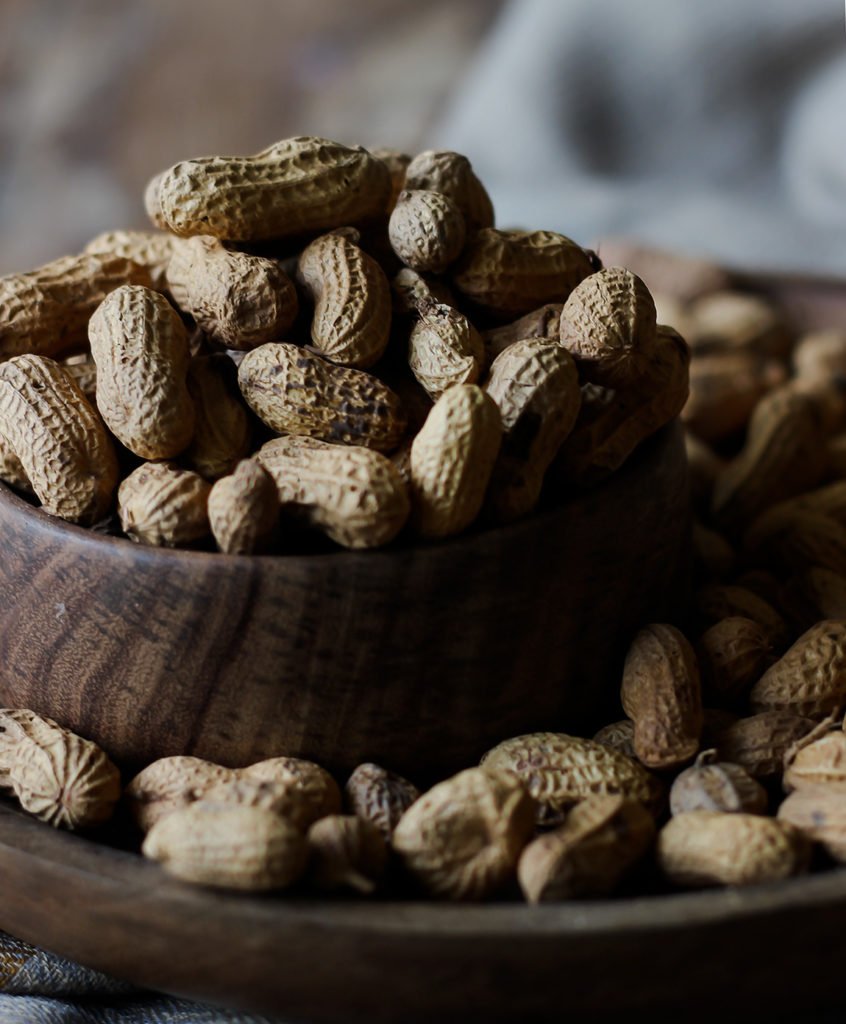
Ayurvedic Views on Peanuts
Ayurveda recommends the consumption of peanuts in moderation and as a morning or mid-day snack option. Peanut oil is recommended to apply externally for joint pain relief and dry skin nourishment. The caution is to consume peanuts in moderation as it is heavy to digest otherwise.
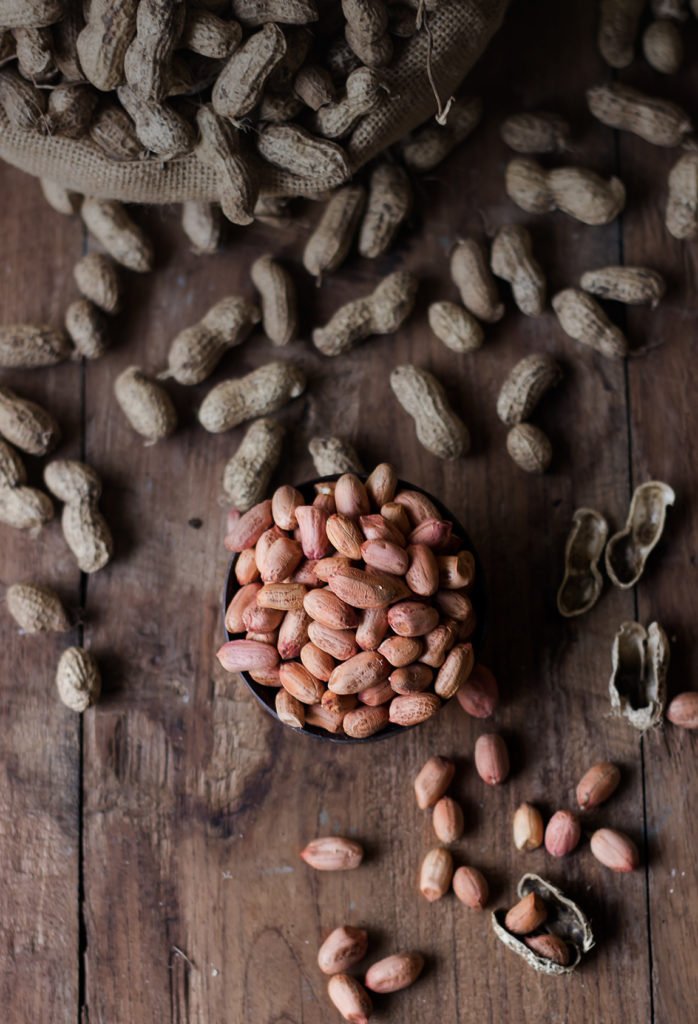
What is the lifespan of peanuts?
The life span of peanuts is in the decreasing order from peanuts in shell, shelled whole peanuts, and deskinned peanuts in airtight containers. Shelled peanuts are kept in air-tight containers in the freezer last 9 months to a year and in the refrigerator for 3 to 4 months. Roasted peanuts last less time before they turn rancid due to exposure to air.
Amazing fact:
Peanuts are not nuts but they belong to the legume family like peas or beans. It is an oil crop due to the high oil content in the nuts. Contains more protein than cashews, almonds, and hazelnuts. Think of these when you next munch on this humble nut!
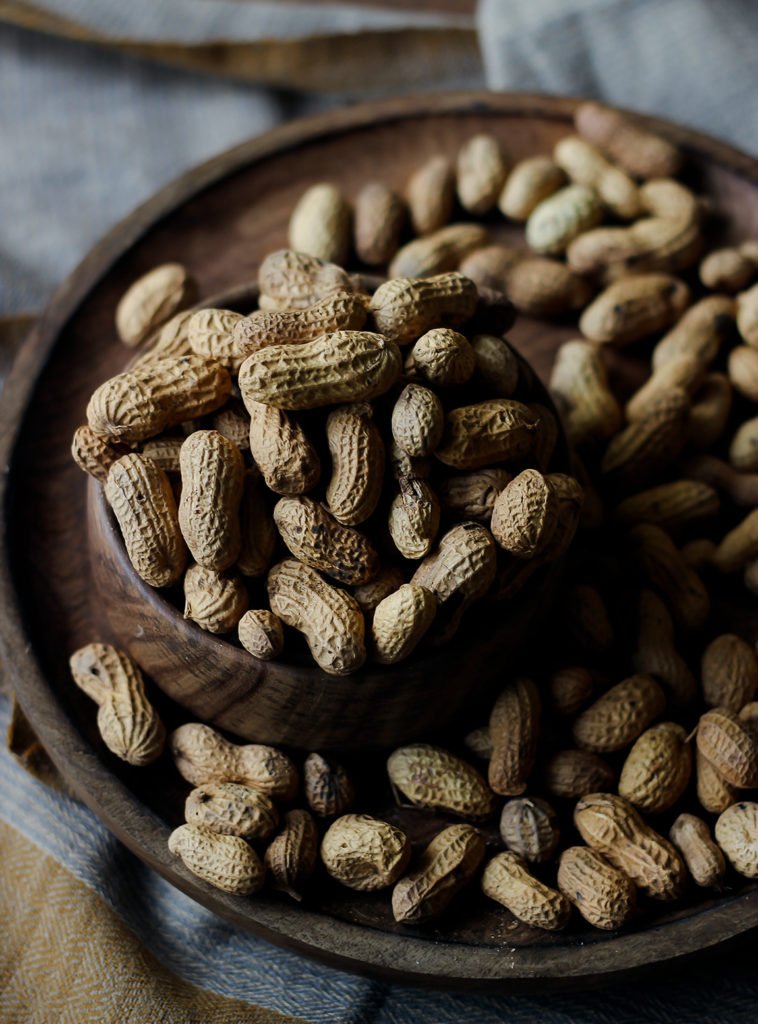
Leaving you with some pics! Enjoy!
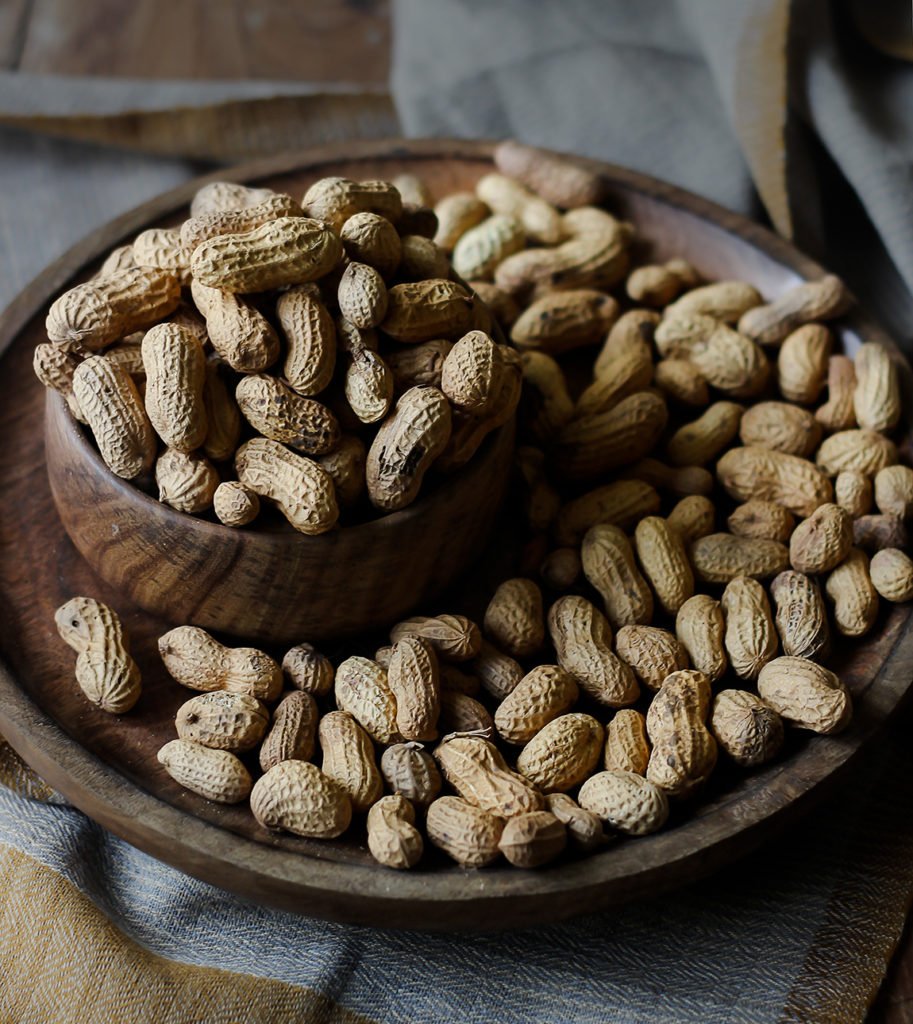
FAQs
If you are looking for a simple quick peanut butter at home, then this foolproof recipe is for you. I will be sharing a detailed recipe soon.
Ingredients:
2 cups of roasted unsalted peanuts
1-2 tablespoons of honey or maple syrup (optional, for sweetness)
1-2 tablespoons of oil (such as vegetable or peanut oil, optional, for creaminess)
Instructions:
1. Start by roasting peanuts if they’re not already roasted.
2. Spread them out on a baking sheet/ pan and roast in a preheated oven at 350°F (175°C) for about 10-15 minutes, until they’re golden brown and fragrant. Be careful not to burn them.
3. Let the roasted peanuts cool for a few minutes.
4. Transfer the cooled peanuts to a food processor or high-powered blender.
5. If you’re using sweetener or oil, add it along with the peanuts in the food processor.
6. Process the peanuts at high speed for a few minutes. At first, the peanuts will turn into a coarse powder, then they will start to clump together. Scrape down the sides of the food processor or blender as needed.
7. Continue processing until the peanut butter reaches your desired consistency. If it’s too thick, you can add a little more oil to help thin it out.
8. Taste the peanut butter and adjust the sweetness or saltiness if needed. You can add a pinch of salt if desired.
9. Once you’re happy with the consistency and flavor, transfer the peanut butter to a clean jar or airtight container.
10. Store the homemade peanut butter in the refrigerator for up to a few weeks. You may need to stir it before each use as natural separation can occur.
That’s it! Delicious homemade peanut butter is ready! Spread it on toast, use it in recipes, or simply eat it by a spoonful. Enjoy!
Almonds and peanuts are both high in nutrition, but they do have some basic differences:
1. Nutritional Profile:
Almonds: Almonds are a good source of healthy fats, protein, fiber, vitamin E, magnesium, and calcium. They are especially known for their high vitamin E content, which is a powerful antioxidant. Their availability year-round makes them an ideal choice.
Peanuts: Peanuts are also rich in healthy fats, protein, and fiber. They contain more protein than almonds but slightly less fiber. Peanuts are a good source of niacin, folate, and manganese.
2. Taste and Texture:
Almonds: Almonds have a slightly sweet and mild flavor with a crunchy texture.
Peanuts: Peanuts have a richer, nuttier flavor when compared to almonds. They are also crunchy but tend to be a bit softer than almonds.
3. Allergies:
Almonds: Almond allergies are comparatively less common than peanut allergies but can still occur.
Peanuts: Peanuts are one of the most common food allergens, and peanut allergies can be severe and life-threatening.
4. Culinary Uses:
Almonds: Almonds are commonly eaten as a snack, used in baking, or ground into almond flour for gluten-free baking. They can also be sliced or chopped and added to salads, yogurt, or oatmeal.
Peanuts: Peanuts are often eaten as a snack, used in cooking (such as in Asian dishes like peanut sauce, savory snacks, or mixtures like namkeens), or made into peanut butter. They are also commonly used in candies, snacks, and trail mixes.
5. Cost:
Almonds: Almonds tend to be much more expensive than peanuts.
Peanuts: Peanuts are generally more affordable than almonds, making them a popular choice for budget-conscious consumers or those with limited resources.
To sum it up, both almonds and peanuts are nutritious nuts with their unique taste, texture, and culinary uses. The choice between the two often comes down to personal preference, nutritional needs, culinary applications, and budget considerations.
Peanut butter is a versatile food that can be enjoyed in many ways. Here are some common ideas on how one can eat peanut butter:
1. Spread it on Toast or Bread: One of the most classic ways to enjoy peanut butter is by spreading it on toast or bread. You can add some sliced bananas, honey, or jam for extra flavor.
2. Make a Peanut Butter Sandwich: Spread peanut butter on two slices of bread and add your favorite ingredients like jelly, sliced fruit, or even bacon for a delicious sandwich.
3. Dip for Fruit or Vegetables: Peanut butter makes a tasty dip for fruits like apples, bananas, or strawberries. It also pairs well with celery sticks, carrot sticks, or pretzels.
4. Stir into Oatmeal or Yogurt: Add a spoonful of peanut butter to your morning oatmeal or yogurt for extra creaminess, flavor, and protein.
5. Blend into Smoothies: Peanut butter adds creaminess and protein to smoothies. Just blend it with your favorite fruits, milk, or yogurt, and some ice for a delicious and nutritious drink.
6. Drizzle over Ice Cream: Melt peanut butter slightly and drizzle it over your favorite flavor of ice cream for a decadent treat.
7. Use in Baking: Peanut butter can be used in various baking recipes, such as cookies, brownies, cakes, and energy bars. It adds richness and flavor to baked goods.
8. Incorporate into Savory Dishes: Peanut butter can also be used in savory dishes like stir-fries, sauces, marinades, and dressings. It adds flavor and richness to the dish.
9. Eat it Straight from the Jar: Sometimes, there’s nothing better than simply enjoying a spoonful of peanut butter straight from the jar for a quick and satisfying snack.
Be experimental and enjoy peanut butter in different ways!
Peanut oil, also known as groundnut oil, is a versatile cooking oil with various culinary and non-culinary uses. Here are some common uses of peanut oil:
1. Cooking: Peanut oil has a high smoke point, making it suitable for high-heat cooking methods such as frying, deep-frying, and stir-frying. Its neutral flavor and ability to retain the natural taste of food make it a popular choice for Asian cuisines like Chinese and Thai dishes and even South-Indian dishes.
2. Salad Dressings: Peanut oil can be used as a base for homemade salad dressings. Its light flavor and smooth texture blend well with vinegar, citrus juices, herbs, and spices, adding a subtle nutty taste to salads.
3. Marinades and Sauces: Peanut oil is often used in marinades and sauces for meats, poultry, seafood, and vegetables. Its mild flavor helps enhance the taste of the ingredients while adding richness and depth to the dish.
4. Baking: Peanut oil can be used in baking recipes, particularly for making cakes, muffins, cookies, and other baked goods. It contributes to a moist texture and adds a subtle nutty flavor to the finished products.
5. Popcorn: Peanut oil is commonly used for popping popcorn due to its high smoke point and neutral taste. It helps produce light and fluffy popcorn with a crispy texture and pleasant flavor.
6. Seasoning Cast Iron Cookware: Peanut oil can be used to season cast iron cookware, such as skillets and Dutch ovens. Applying a thin layer of oil to the surface of the cookware helps prevent rusting and creates a non-stick coating over time.
7. Beauty and Skincare: Peanut oil is rich in vitamin E and antioxidants, making it beneficial for skin care. It can be used as a natural moisturizer for dry skin, a massage oil, or as an ingredient in homemade skincare products like lotions and creams.
8. Wood Treatment: Peanut oil can be used as a natural wood treatment to condition and protect wooden cutting boards, utensils, and furniture. Applying a small amount of oil to the wood surface helps restore its luster and prevent drying and cracking.
Always choose high-quality, cold-pressed peanut oil for the best flavor and nutritional benefits in cooking and other uses. Additionally, individuals with peanut allergies should avoid using peanut oil in any form.
Peanut oil and olive oil are both popular cooking oils with distinct flavors, nutritional profiles, and culinary uses. Here’s a comparison of the two:
1. Flavor:
Peanut Oil: Peanut oil has a mild, nutty flavor that adds a subtle taste to dishes. It is often used in Asian and stir-fry cooking, where its flavor complements the ingredients without overpowering them.
Olive Oil: Olive oil has a distinct fruity flavor with hints of grassiness or peppery notes, depending on the variety and quality. It is commonly used in Mediterranean cuisines and is prized for its flavor profile, which varies from delicate to robust.
2. Smoke Point:
Peanut Oil: Peanut oil has a high smoke point, typically ranging from 450°F to 450°F (232°C to 232°C). This makes it suitable for high-heat cooking methods such as frying, deep-frying, and stir-frying.
Olive Oil: The smoke point of olive oil varies depending on the type and quality. Extra virgin olive oil, which is less refined, has a lower smoke point (around 320°F to 375°F or 160°C to 190°C) and is best used for low to medium-heat cooking, salad dressings, and drizzling over finished dishes. Refined olive oil has a higher smoke point, making it suitable for higher-heat cooking methods.
3. Nutritional Profile:
Peanut Oil: Peanut oil is high in monounsaturated fats, which are considered heart-healthy fats. It also contains vitamin E and phytosterols, which have antioxidant properties. Peanut oil is relatively low in saturated fats.
Olive Oil: Olive oil is rich in monounsaturated fats, particularly oleic acid, which is associated with various health benefits, including heart health and inflammation reduction. It also contains antioxidants such as vitamin E and phenolic compounds.
4. Culinary Uses:
Peanut Oil: Peanut oil is commonly used in Asian cuisines for stir-frying, deep-frying, and frying due to its high smoke point and mild flavor. It is also used in baking and salad dressings.
Olive Oil: Olive oil is a staple in Mediterranean cuisines and is used for sautéing, roasting, grilling, salad dressings, and dipping bread. Extra virgin olive oil is prized for its flavor and is often used in dishes where its fruity taste can shine.
In short, both peanut oil and olive oil have their own unique flavors, smoke points, and nutritional profiles, which make them suitable for different culinary applications. The choice between the two often depends on personal preference, the type of cuisine being prepared, and the cooking method used. Also, price contributes significantly along with the area of production. eg, peanut oil is manufactured in India and hence available at a more budget-friendly price than olive oil. Olive oil of most brands is imported in India and is costlier when compared to peanut oil.
Both peanuts and almonds are nutritious and have unique health benefits, but which one is better for you depends on your specific dietary needs and health goals. Here’s a detailed comparison of peanuts and almonds to help you make an informed choice:
Nutritional Comparison
Calories and Macronutrients (per 1-ounce serving)
Peanuts:
Calories: 160
Protein: 7 grams
Fat: 14 grams (mostly unsaturated)
Carbohydrates: 6 grams
Fiber: 2 grams
Almonds:
Calories: 170
Protein: 6 grams
Fat: 15 grams (mostly unsaturated)
Carbohydrates: 6 grams
Fiber: 3.5 grams
Vitamins and Minerals
Peanuts: are rich in niacin (vitamin B3), are good source of folate, magnesium, and phosphorus
Contains resveratrol and is a powerful antioxidant.
Almonds: are high in vitamin E, which is important for skin health and antioxidant protection. It is a good source of magnesium, calcium, and riboflavin (vitamin B2) and contains a higher amount of fiber compared to peanuts.
Health Benefits
Peanuts:
Heart Health: peanuts contain monounsaturated fats that help maintain healthy cholesterol levels.
Antioxidant Properties: Peanutes are rich in resveratrol and other antioxidants that may reduce inflammation.
Satiety: High protein content in peanuts can help with feelings of fullness, aiding in weight management.
Almonds:
Heart Health: Almonds are also high in monounsaturated fats and vitamin E, which are beneficial for heart health.
Bone Health: High calcium and magnesium content present in almonds support strong bones.
Blood Sugar Control: The high fiber content of almonds helps regulate blood sugar levels, making them a good choice for people with diabetes.
Weight Management: Fiber and healthy fats promote satiety, which can help with weight control if almonds are taken along with balanced diet.
Considerations
Allergies:
Peanuts: are considered common allergen and can cause severe allergic reactions in some people.
Almonds: almonds are less likely to cause allergies compared to peanuts, but can still be allergenic for some.
Nutrient Density:
Almonds generally offer more vitamins and minerals per ounce compared to peanuts, particularly in terms of vitamin E and fiber.
Price and Accessibility:
Peanuts are typically less expensive and more widely available than almonds.
Variety and Usage:
Both nuts can be consumed raw, roasted, or used in various culinary dishes. They can also be turned into nut butters (peanut butter and almond butter) and added to snacks, salads, and baked goods.
Conclusion
Peanuts: A cost-effective source of protein and healthy fats with significant heart health benefits and antioxidant properties. Suitable for those looking for a high-protein snack on a budget.
Almonds: Provide a richer nutrient profile, especially in terms of vitamin E and fiber, with additional benefits for heart and bone health, and better blood sugar control. Ideal for those looking for a nutrient-dense snack and willing to invest a bit more.
In summary, both peanuts and almonds offer substantial health benefits, and the better choice depends on your dietary needs, budget, and any potential allergies. For a balanced diet, incorporating a variety of nuts can provide the best range of nutrients and health benefits.
Peanuts can be both healthy and fattening, depending on how they are consumed and in what quantities. Peanuts can be a healthy addition to your diet when consumed in moderation and prepared in a healthy way. They provide essential nutrients, healthy fats, and protein that can support overall health. However, due to their high calorie density, it’s important to practice portion control and be mindful of how they fit into your total daily caloric intake. Avoiding peanuts prepared with added sugars, unhealthy fats, or excessive salt can help you reap their health benefits without the downsides. your diet or if they could potentially contribute to weight gain
The best time to eat peanuts can vary based on your dietary goals, lifestyle, and personal preferences. However, here are some general guidelines for incorporating peanuts into your diet effectively
Moderation: Regardless of the time of day, it’s important to consume peanuts in moderation due to their high calorie and fat content. A typical serving size is about 1 ounce (28 grams), or roughly a small handful.
Hydration: Drink plenty of water when eating peanuts, as they can be quite dense and may increase your need for fluids.
Healthy Pairings: Combine peanuts with other nutrient-dense foods, such as fruits, vegetables, and whole grains, to create balanced meals and snacks.
By considering these guidelines, you can incorporate peanuts into your diet at various times of the day to support your nutritional needs and health goals.

